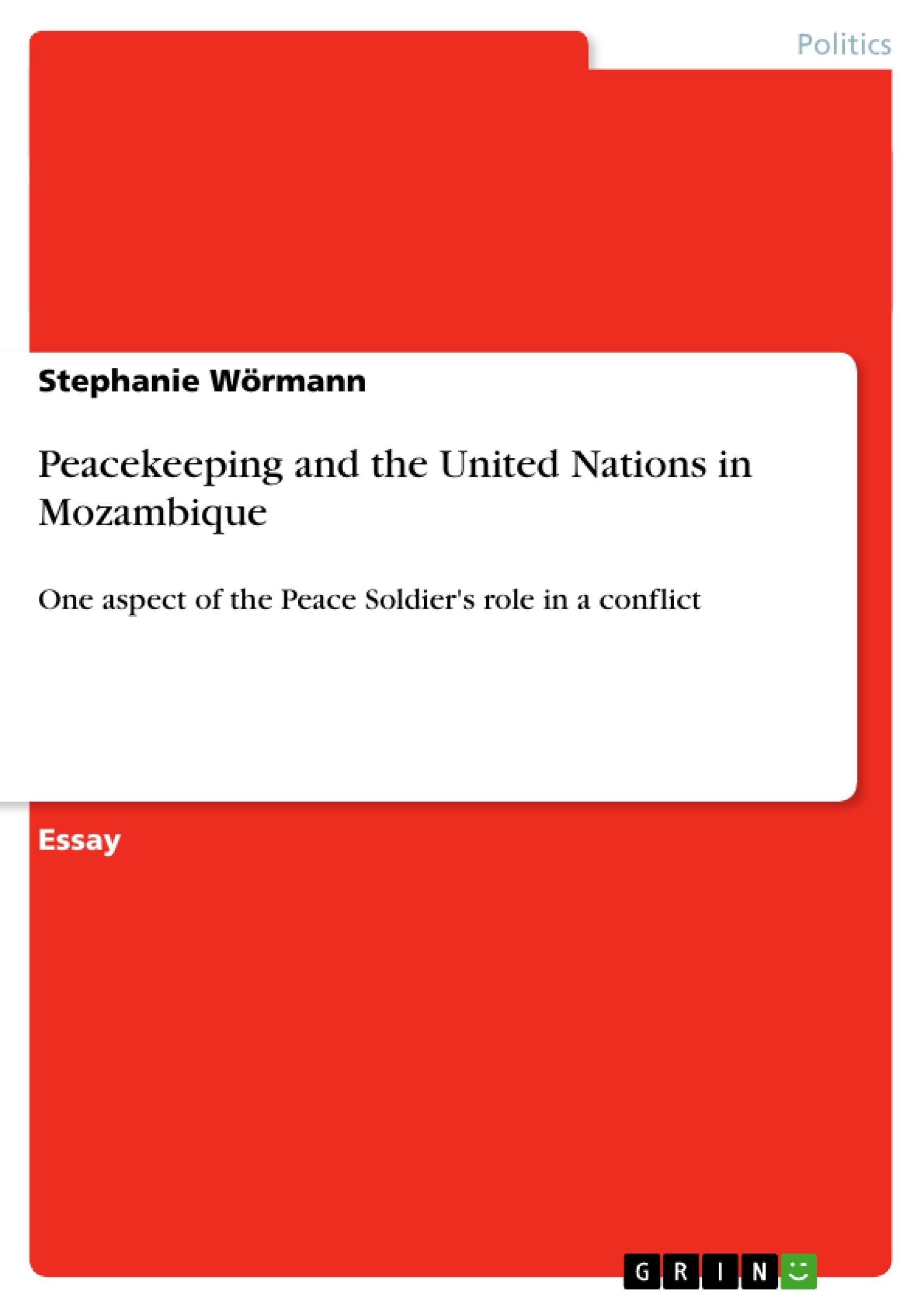Ever since the Second World War international peace and security have been at the top of the agenda of the international community. Especially the peacekeeping operations of the United Nations (UN) are an important component of today’s international peace situation. What exactly is peacekeeping and how does it work?
The efforts of the UN to end war, their successes or failures have increasingly become subject of discussions by scholars and politicians over the last years.
This paper focuses on the concept of peacekeeping and how it is put into practice by the UN. It provides a brief overview of the different concepts that peace studies offer in terms of ending conflicts. Furthermore the concept of peacekeeping and its developement within the UN is elaborated exemplifying the implementation of UN peacekeeping efforts in Mozambique.
Inhaltsverzeichnis (Table of Contents)
- Introduction
- Conceptualization
- Peacemaking
- Peace enforcement
- Peace building
- Peacekeeping
- The United Nations & Peacekeeping
- History of Peacekeeping
- The legal and practical parameters of peacekeeping
- Peacekeeping in Practice – the case of Mozambique
- Background
- ONUMOZ
- The Mandate
- Operational activities
- Conclusion
Zielsetzung und Themenschwerpunkte (Objectives and Key Themes)
This paper explores the concept of peacekeeping within the United Nations, specifically focusing on its practical implementation in Mozambique. The author examines the different stages of conflict resolution, including peacemaking, peace enforcement, peacebuilding, and peacekeeping, highlighting the specific role of peacekeeping in the context of the UN.
- The role of peacekeeping operations in international peace and security
- Different concepts of conflict resolution, including peacemaking, peace enforcement, and peacebuilding
- The history and development of UN peacekeeping
- The legal and practical parameters of peacekeeping operations
- The implementation of peacekeeping in Mozambique through the example of ONUMOZ
Zusammenfassung der Kapitel (Chapter Summaries)
- Introduction: This chapter introduces the topic of peacekeeping and its significance in today's international peace situation. It discusses the growing importance of UN peacekeeping operations and outlines the paper's focus on the concept of peacekeeping and its practical application.
- Conceptualization: This chapter defines and differentiates four key concepts in conflict resolution: peacemaking, peacekeeping, peace enforcement, and peacebuilding. It highlights the distinct roles of each concept and their importance in the transition from armed conflict to peace.
- The United Nations & Peacekeeping: This chapter explores the history and development of UN peacekeeping operations, including their origins and evolution. It discusses the legal and practical parameters that guide UN peacekeeping, including its mandate and operational principles.
- Peacekeeping in Practice – the case of Mozambique: This chapter examines the specific case of ONUMOZ, the UN peacekeeping operation in Mozambique. It provides background on the conflict in Mozambique and explores the mandate and operational activities of ONUMOZ, highlighting the role of peacekeeping in bringing peace to the country.
Schlüsselwörter (Keywords)
This preview focuses on key terms and concepts relevant to the study of peacekeeping, such as international peace and security, UN peacekeeping operations, conflict resolution, peacemaking, peace enforcement, peacebuilding, and the case study of ONUMOZ in Mozambique.
- Quote paper
- Stephanie Wörmann (Author), 2005, Peacekeeping and the United Nations in Mozambique, Munich, GRIN Verlag, https://www.grin.com/document/87511



